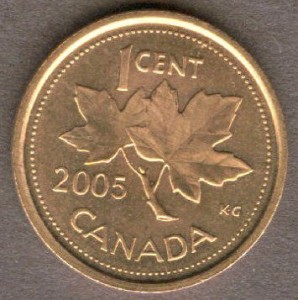Between raw material, labor and transportation the Euro cent costs more than it’s worth
Finland and Holland eliminated it but Italy doesn’t even discuss it
 Canada said goodbye to the Penny and as of February 4th the royal mint stopped production of the historical bronze coin, hailed back as far as 1858. The reason for this decision is simple and pragmatic: it was too expensive. Because of inflation its purchase value decreased to the point that in 2012 it cost the state 1.6 cents to produce a penny. By retiring the coin, the government forecasts a savings of 11 million dollars a year.
Canada said goodbye to the Penny and as of February 4th the royal mint stopped production of the historical bronze coin, hailed back as far as 1858. The reason for this decision is simple and pragmatic: it was too expensive. Because of inflation its purchase value decreased to the point that in 2012 it cost the state 1.6 cents to produce a penny. By retiring the coin, the government forecasts a savings of 11 million dollars a year.
It also seems our Euro cents cost more than they are worth but with 17 states which produce their own money the situation is complicated. Neither the mint, nor the Ministry of the Treasury wants to make the actual prices of producing the small coins for Italy public. Sources from the Ministry of Economy, in all honesty, explained to us that “it involves information that is too sensitive,” especially if the purpose is to compare it with those produced in other countries.
In any case, the same sources confirmed that if the raw material cost is clearly lower than the value of the coin, the final work is done by a remission in respect to the cost of seigniorage (difference between the value of money and the cost to produce and distribute it). This means that nobody could resell the copper of the coins and earn from it, but once factors like labor and transportation are added, the Euro cents cost more than their nominal value.
Well, they are expensive, and apparently they are not even indispensible. Two countries in the Euro zone already rejected these “useless” coins. A little after the introduction of the Euro in Finland it was decided by law not to produce the coins and also in Holland they arrived at an agreement between the interested groups: in both countries the prices were rigorously rounded off, for excess or for deficiency, to 5 Euro cents. If you travel and want to pay with your little coins, you have the right to do so but you won’t find a single Finnish coin in the change stores give you. Given the inclination of certain member states, Brussels commented with regards to this: the European Commission adopted a recommendation which asks the member states to avoid certain regulations because it could cause an overcharge for payments made in cash.
And so while Canada knew how to handle affairs and abandoned the penny, in Europe, other than a few exceptions, the cent is still considered necessary. In Italy, a country where the parish of Atella asked people not to even put them in the collection plate because anyway they would “be thrown out.” The idea of abandoning production of these coins that are more expensive than useful “wasn’t even taken into consideration.”
Camilla Tagino


![[foto: European Institute for Gender Equality]](https://www.eunews.it/wp-content/uploads/2021/03/gender-pay-gap.jpg)


![[foto: imagoeconomica]](https://www.eunews.it/wp-content/uploads/2024/08/pnrr-meloni-350x250.png)



